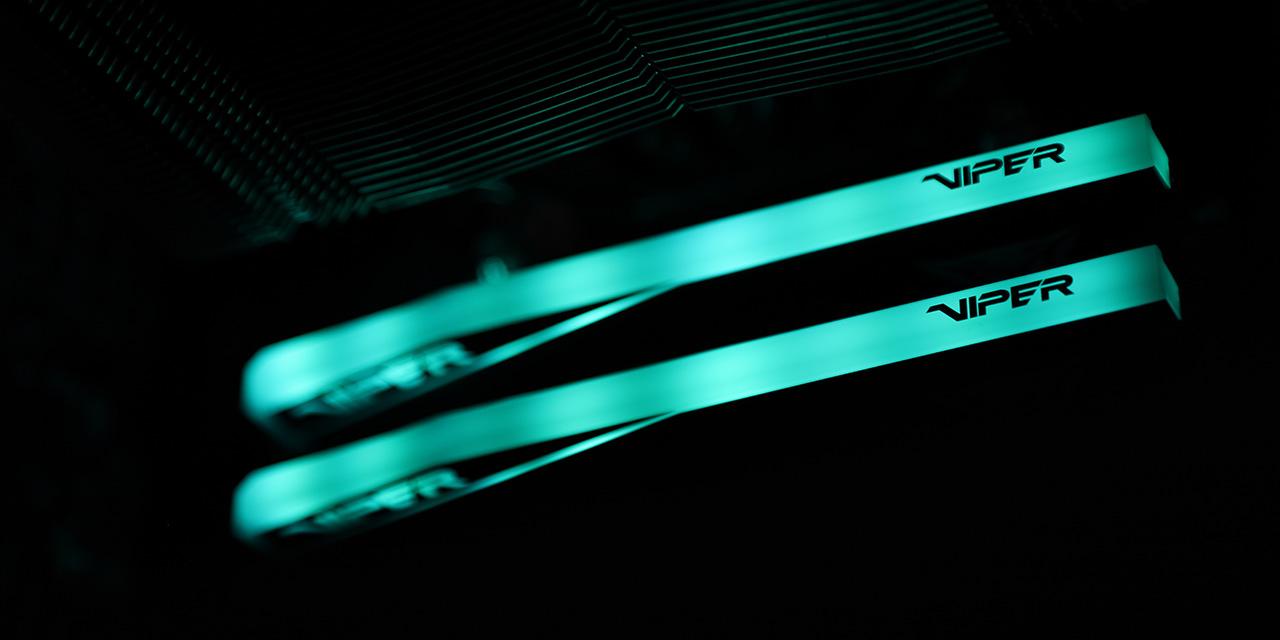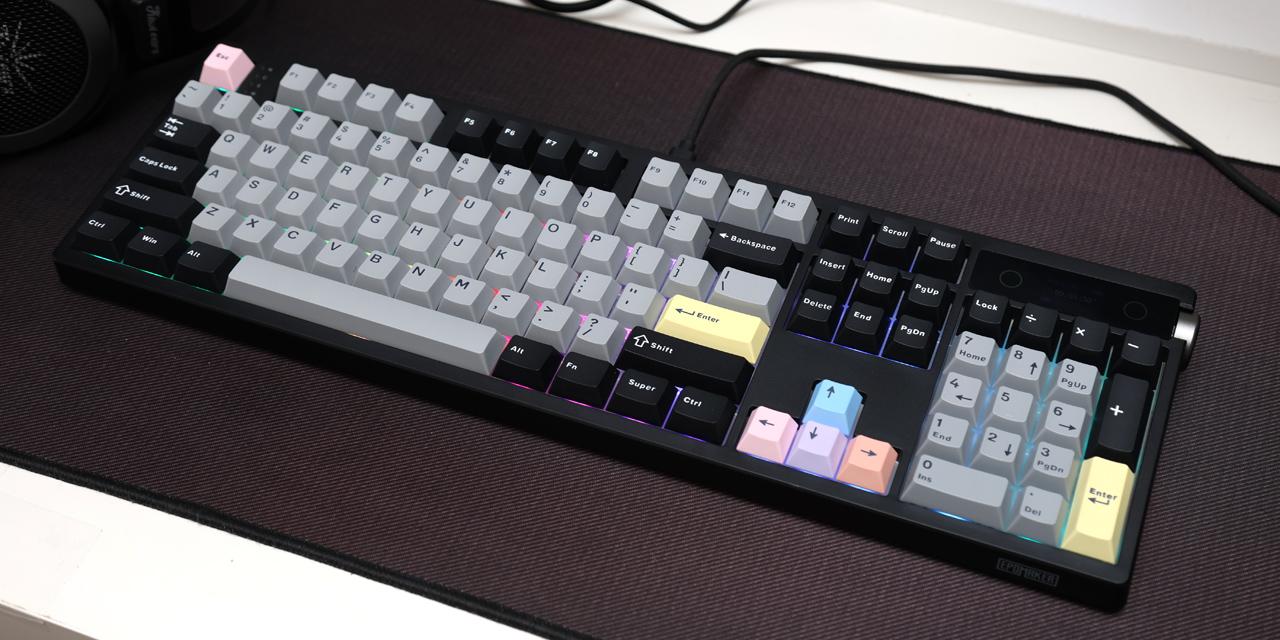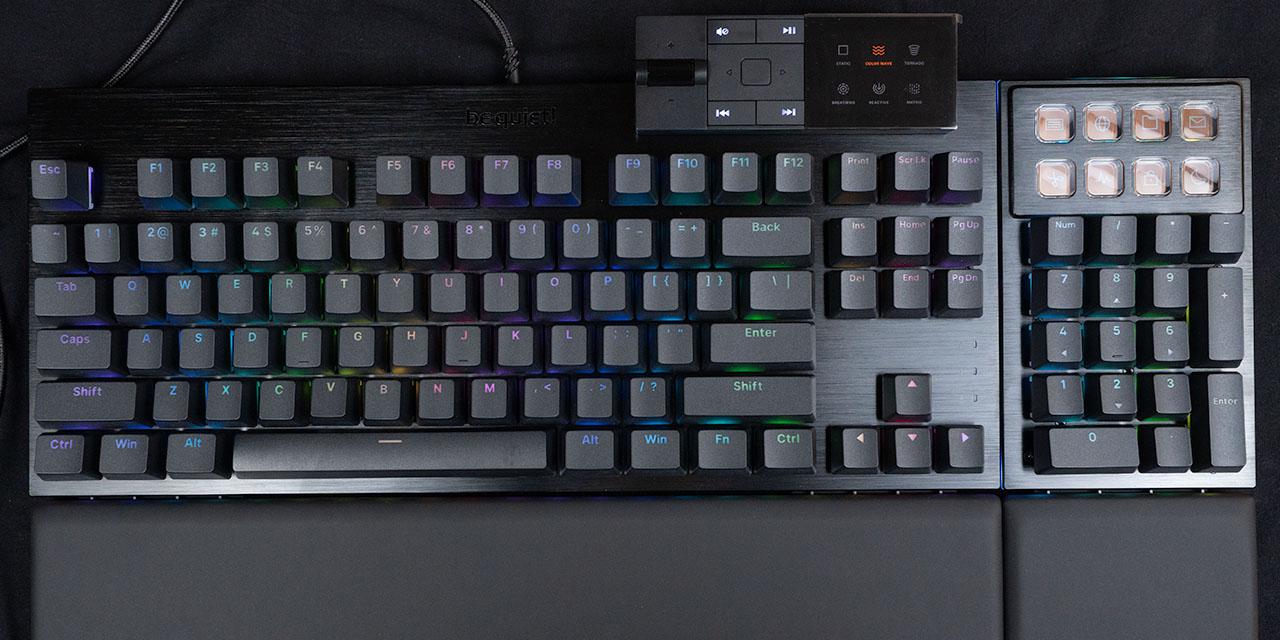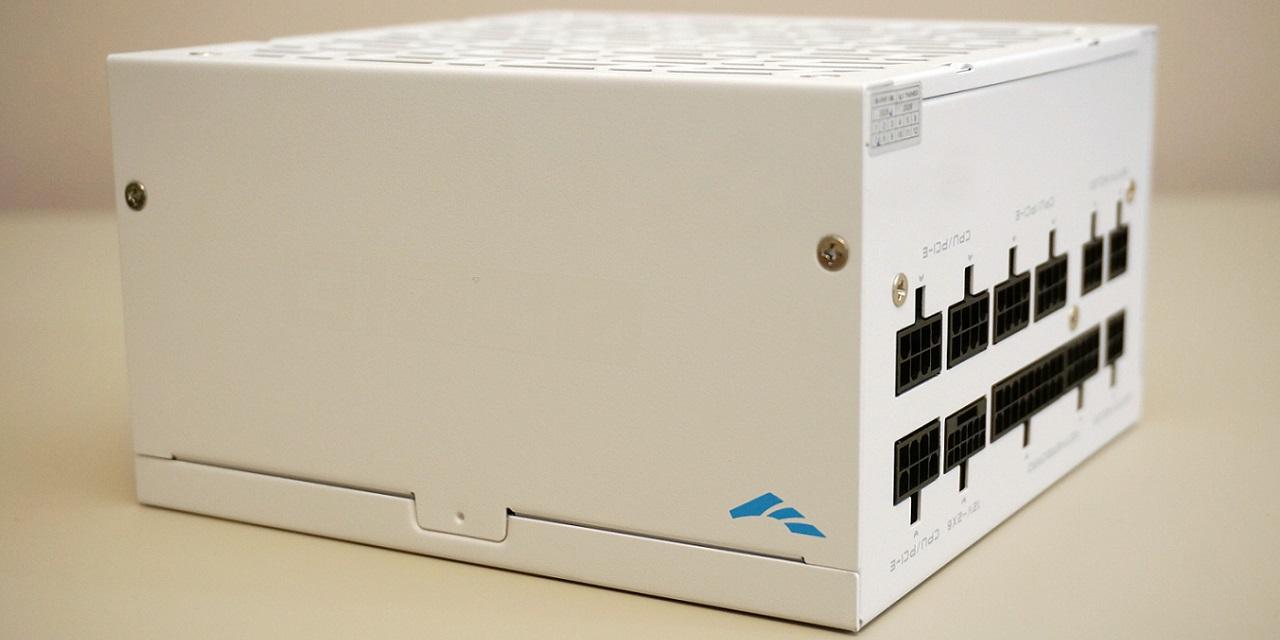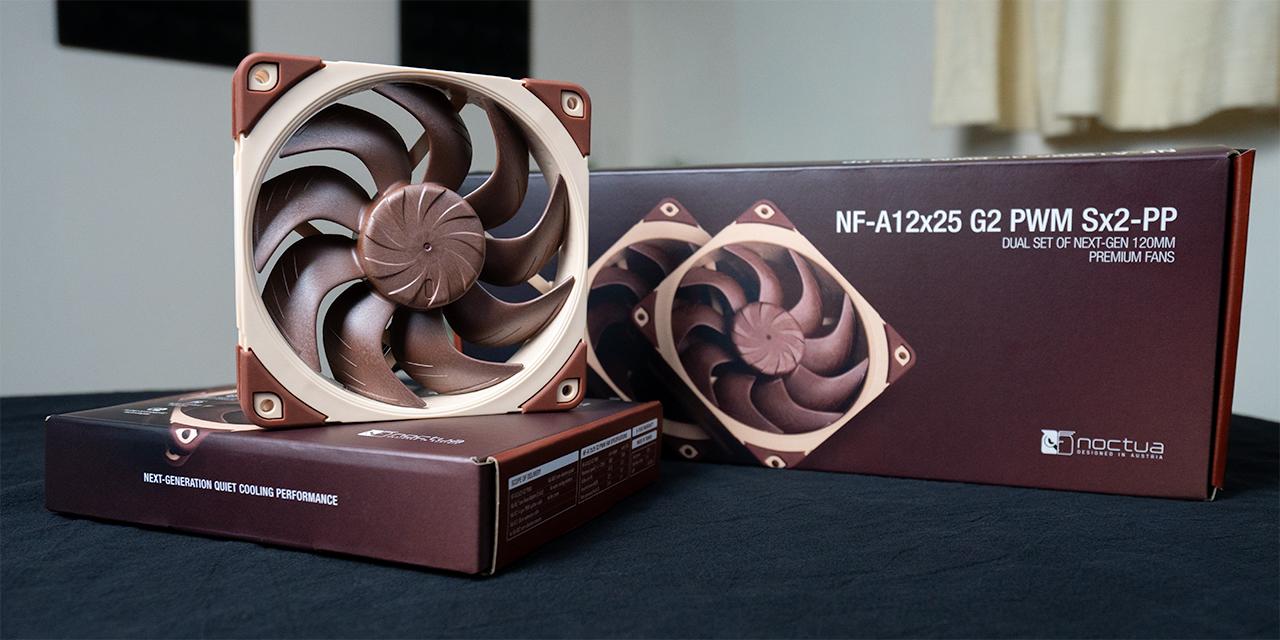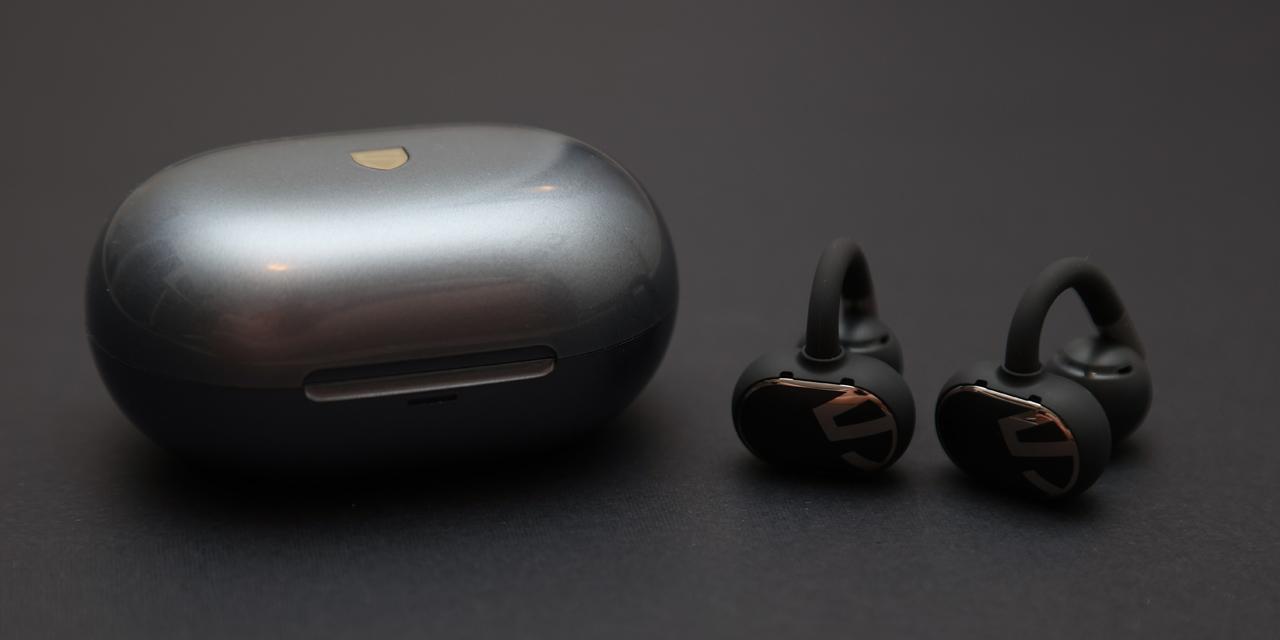Page 2 - A Closer Look - Hardware and Software

You will notice the similarities of the MechLands M75 with the Vibe75. Both keyboards share the same shape with their rounded bodies. These curved corners and sides slope downward and out. Of course, the primary difference is the color, as we have a green-and-black color scheme. All the alphanumeric keys and some of the modifiers are black with green legends, while the inverse can be found on other modifiers and function keys. Unlike the Vibe75, the M75 has a gray plastic frame that borders around the sides and top. In addition, we only have a green volume knob at the top that reminds me of Shrek, at least in color. Overall, I do prefer the blue shades on the Vibe75, but I still like the overall appearance of the M75, even if it only comes in this green-and-black color scheme.
In terms of dimensions, the MechLands M75 is 334mm in width, 150mm in depth, and 42mm in height. This height will increase when you kick up your feet underneath, as you will see later. The keyboard is made with ABS plastic and weighs in at an expected mass of 827g. This is a bit lighter than the Vibe75, since the M75 is wired only and does not have a battery inside. In terms of build quality, the M75 does have a very slight amount of flexing when torqued, but it is very minimal. Furthermore, the aluminum backplate under the keys means there is only a little deck flex. The front edge frame of the MechLands M75 is 20mm tall, which means you can add a palm rest here, but we do not have one included out of the box.

The layout of the MechLands Vibe75 is a standard North American QWERTY ANSI layout. It has a total of seventy-nine keys plus a volume knob. This is near typical for a 75% size. The layout is easy to adjust to, as most of the keys are where you would expect. The primary difference is on the right side of the M75. Unlike a full-size or tenkeyless keyboard, we do not have a cluster of six keys above the arrow keys. Instead, the Delete, Page Up, and Page Down keys are lined up in one column, while the rest are relegated to secondary functions. Furthermore, the bottom row does have standard spacing with 1.25U keys on all the non-space bar keys, but we are missing the right Alt and Menu/Windows keys. Instead, the arrow cluster takes up this space. Furthermore, this makes the right Shift key smaller. At the top right corner, there is a volume knob held on with a set of pins that slot into one or two rows of pins underneath. However, if you want an extra key instead, you can swap out the knob for an additional key and switch.

As for secondary functions, none of them are on the keycaps, but you can find these specified in the user manual. To access these functions, start by pressing the Fn key on the bottom right side before pressing the specified key. The first set is found in the top function row. With the Windows layout, F1 and F2 are used to decrease and increase the screen brightness. F3 to F6 opens your Task Manager, File Explorer, Mail, and default browser applications, respectively. All the media keys are found from F7 to F12, and they execute Previous Track, Play/Pause, Next Track, Mute, Volume Down, and Volume Up. The keyboard also supports Mac functions, and they are placed where you would expect on a Mac keyboard.
The next set of secondary functions are used to replace the missing keys with this 75% size. The secondary function of P is used for Print Screen, while the open and close square brackets are used for Scroll Lock and Pause. Insert and End, are all found on semi-colon, and single quote. The Fn + Windows key toggles lock and unlock of this key. To reset any of your changes you can hold Fn + Escape for five seconds. There are other lighting effect shortcuts, but we will review those later.

At the back, the MechLands M75 has two switches to make further modifications to the operation. The left side toggle lets users choose between Windows and Mac keyboard layouts. This primarily changes the function row functions. On the opposite side is an on/off switch, which is a bit strange for a keyboard with no wireless operation. In fact, the only thing that seems to visibly change with this switch is the backlight, as the keyboard continues to operate when it is off. In between the two switches is a USB Type-C plug. Over this wired connection, the M75 can report at up to an 8000Hz rate, although I could not find a setting in the software to do so. Increasing the polling rate this high may increase the usage of your CPU.

The bottom of the MechLands M75 is clean with a few interesting elements. The first one is the metal plate in the middle, which has the product name and description etched into it. It also states this was made in China. Each corner has rubber padding to keep the keyboard in place. This ensures the keyboard does not easily move about. On the top corners, there are a pair of paired extending feet. This provides a total of three different incline levels, letting users choose how high or low they want their keyboard to sit. All the feet are rubber-tipped to provide a grippy hold to its surface when inclined.

The black and green color scheme may cause some divisive opinions, but there is no doubt it stands out on most desks. Given my familiarity with the Vibe75's layout, the M75 was extremely easy to get used to. In terms of layout, everything felt comfortable, but some may not like the shorter right Shift key. If you have bigger hands, you may accidentally hit the Up arrow instead. I also ended up keeping the volume knob in the top corner instead of replacing it with an additional key.
With respect to the typing experience, I was very satisfied with the MechLands M75. It does not exactly sound the same as the Vibe75 despite having a similar shell. Each press has a nice bottoming out sound with a decent thock. I found this noise to be less pronounced than the Vibe75, and that is reflected in the recording above. Even with an aluminum backplate, the M75 keys do not have any metal resonating noise or any hollowness. Each keystroke travel is smooth and feels pleasant to press. Even so, I personally would prefer the more pronounced thock sound of the Vibe75, but it comes down to personal preference. Longer keys like the space bar and the Enter have a different sound with a deeper pitch. There is a slight amount of wobble on the sides of these keys. The stabilizers are lubricated and dampened well, so there is no rattle.

The backlighting of the MechLands M75, with its opaque keys, is not too impressive. Its double-shot PBT keycaps with no shine-through legends means none of the legends light up when the light is turned on. Instead, the illumination acts more as an undergrow. The LED lighting under each switch is south facing, which makes it a bit more visible to the user. At maximum brightness, the lights are bright, even if they are obstructed by the keys. The lighting options are typical with different effects, including rainbow, static, dynamic, and reactive modes. All of these can be configured through the software or with secondary functions. These shortcuts are found on the arrow cluster. Up and down are used to increase or decrease the brightness while left and right decrease and increase the effect speed, where applicable. Backspace lets you cycle through different lighting effects, while Delete cycles through colors. You can also change these settings in the software.


The software utility to control the MechLands M75 is a standalone application called MechLands Driver. It is available through the manufacturer's website as a 66.2MB compressed ZIP file that can be extracted and installed onto your system. The overall user experience is a bit better than what I had to use with the Vibe75. All the menus are located on the top ribbon menu. The Main page is where you can change what each key does, change the actuation trigger range, and set up macros. As these are Hall effect switches, you can also set up some additional settings that let you take advantage of the analog nature of these switches. First is DKS, or Dynamic Keystroke, which lets you set up four functions on four distinct positions of the keystroke. MT lets you set up two functions based on whether you hold or tap the key. TGL lets you enable continuous key triggers whether you hold it down or if you double tap it. Finally, there is one called snap key, which lets you set up a pair of keys so that when both are pressed, the last keystroke is the only one recognized. These functions are meant to help with gaming functions, although MechLands warn that some first-person shooter games may ban you if you use these features, so use at your own caution.
The other menus are self-explanatory. FnSetting is where you can add or change different secondary functions. Macro is for recording macros. Light is used to change the lighting effects. Share is where you can download other users' lighting, settings, and macros. You do need an account to upload your own custom options, which can be done through the My Account tab. Finally, About is where you can change application specific behavior as well as update the utility or the keyboard's firmware. Overall, the MechLands Driver is functional enough, but it still felt a bit clunky. This includes longer load times and several grammatical or spelling errors throughout. Thankfully, if you do not need to make these sorts of custom changes, you do not need to download the utility.
Page Index
1. Introduction, Packaging, Specifications
2. A Closer Look - Hardware and Software
3. A Closer Look - Disassembly and Internals
4. Conclusion
